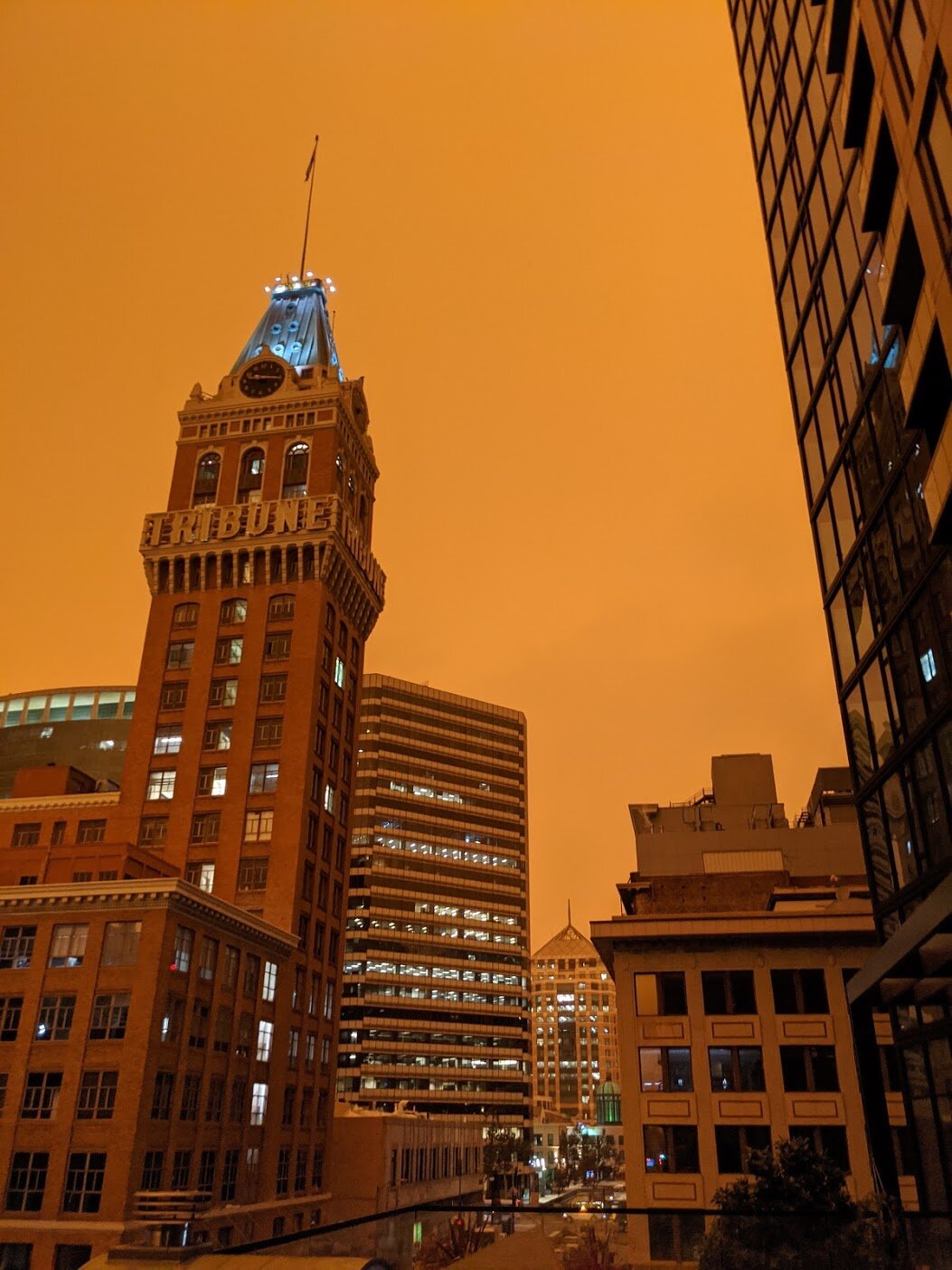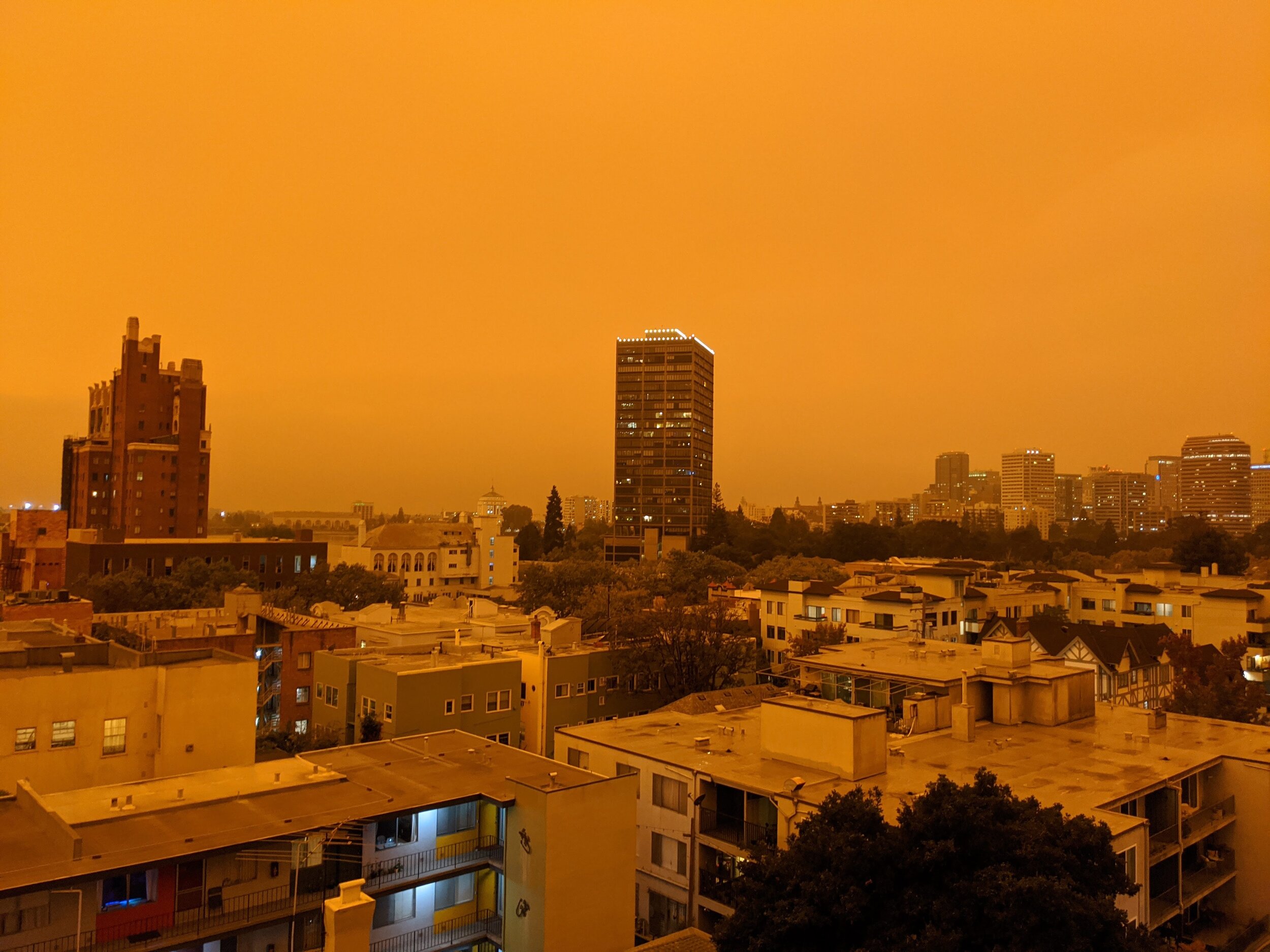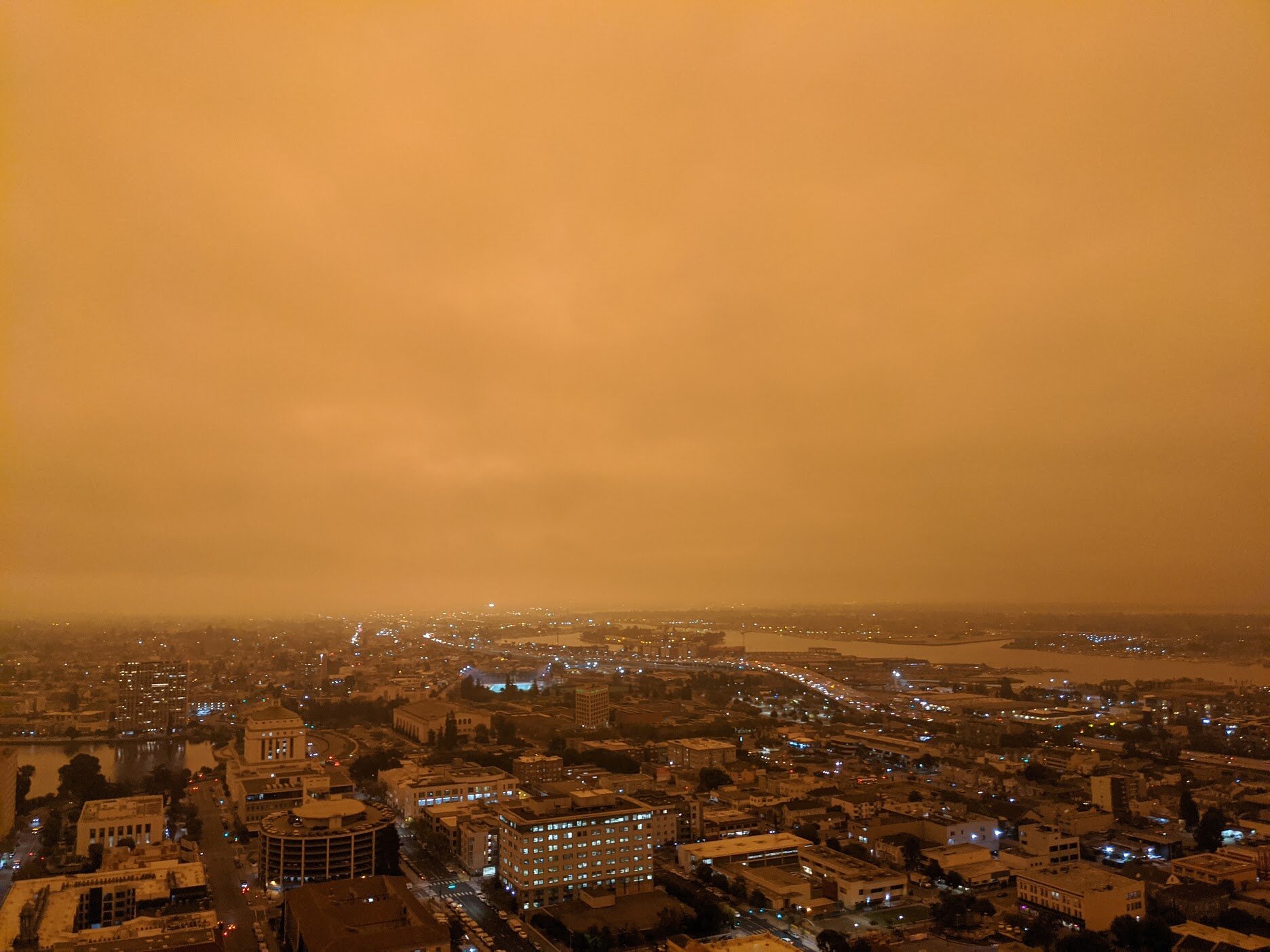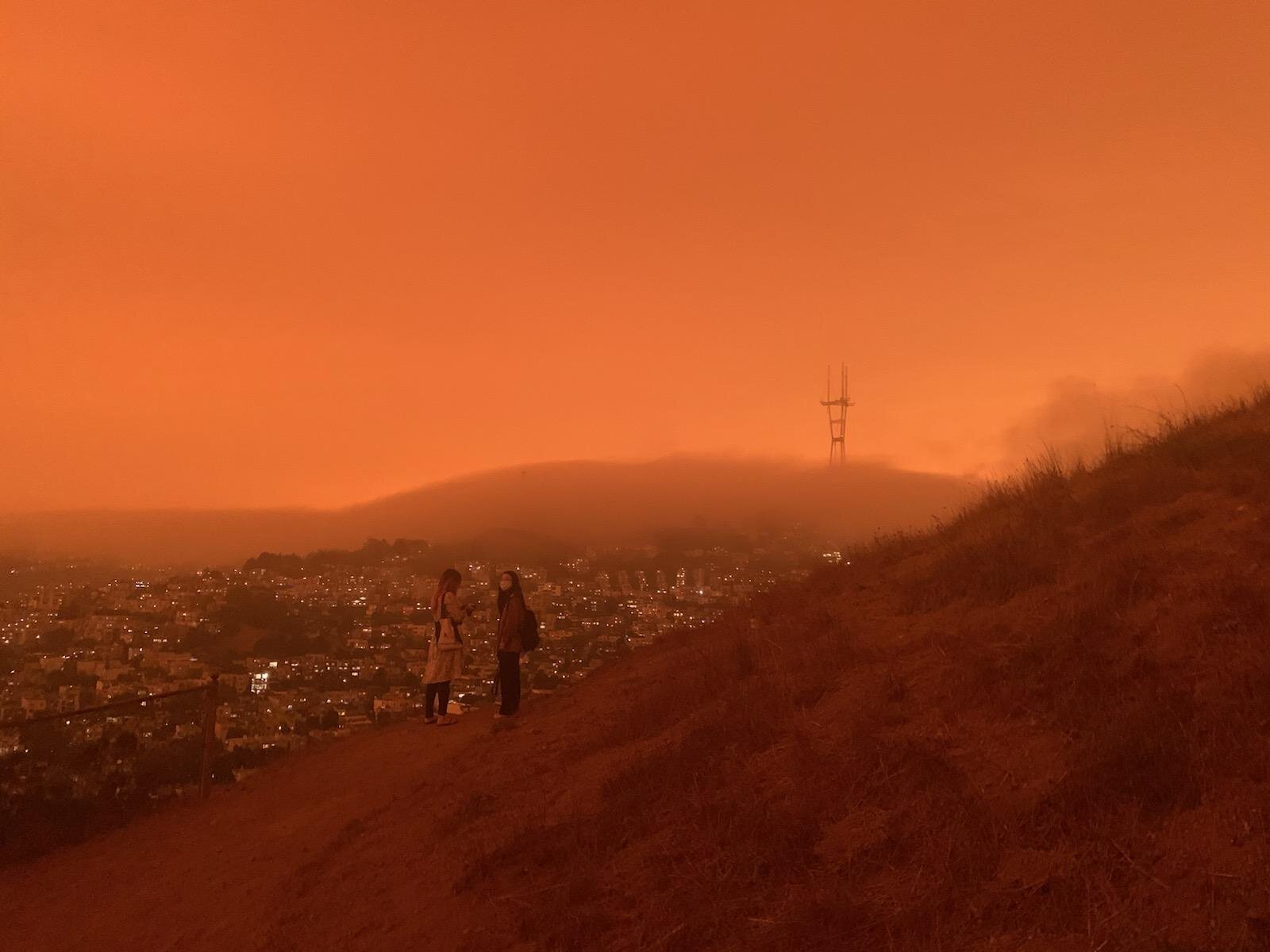CLIMATE ACTION SERIES /// Environmental Choices WE CAN FORM
Let’s talk about the top ways to reduce our carbon footprint, sustainable opportunity areas for industries, and the momentum that decarbonization has right now with less than 10 years to reduce our global emissions by 65%.
Yes, single reader, your habits make a difference.
Humans are social beings, many of our basic habits are shared, and, most importantly, they aggregate. Choices that we make as consumers, as groups, and all the way up to major companies and countries have a very real impact on global warming.
Whether you’re at the Thanksgiving table or the virtual conference room table, I’ve put together environmental choices that we can make in our personal and professional lives to reduce our carbon footprint and conserve resources:
WE CAN FORM is an acronym for the environmental choices we should be prioritizing. W is for Water conservation. E is for Electrify, and so on. Scroll below for more detail.
If you’d prefer to listen to this content, check out my interview on the Biofriendly Podcast - published October 29, 2020. It’s 45 minutes. I recommend pairing with a walk outside.
But First, Why Do We Care? And Climate Stories
Clearly the years of doom forecasting hasn’t motivated humanity to act on climate change; we are woefully behind on slowing global warming to the scientists’ recommendations: by 2030 (at the latest), we have to reduce our total global emissions by 65% in order to hold global warming to 1.5* C higher than pre-industrial levels (that’s about 35*F, which parts of the world are already experiencing, by the way).
Or else, they say, climate change will become irreversible. (Don’t worry, it gets better)
September 9, 2020 was what I call The Day the Sky Turned Orange here in the Bay Area. These apocalyptic photos were seen worldwide.
As you probably know, California is experiencing the largest wildfire season in its history.
That day, the smoke blocked the sunlight, so it appeared as though the sun never rose, it was like 5am all day. Ash rained from the sky, it covered my windowsills and coffee table. It was horrifying.
But, it was a turning point.
I think it took a lot of Northern Californians, who are generally people that accept climate change is real and humans are causing it, and turned them into climate activists.
People started asking, what can we DO?
It’s exciting, there is real momentum right now.
Since The Day the Sky Turned Orange, we’ve seen an absolute groundswell of companies and countries that have made major carbon neutrality pledges. See my first Climate Action Series post: Setting the Stage for some of those headlines.
I recently joined the Climate Reality Leadership Corps, an Al Gore founded organization, and during the weeklong training, we spent an incredible amount of time talking about our climate stories. How climate change has affected us; why we care, personally.
The thinking is, people relate to stories, not statistics. We will be motivated to do something about climate change through our own climate stories, and through witnessing those of others.
I will share my climate story another time (or listen to my interview on the Biofriendly Podcast), but The Day the Sky Turned Orange was one for 2020.
We’ve had other, more inspiring climate stories this year.
One of the few upsides of the pandemic is that we’ve seen what a vision of our less polluted future could be if we dramatically reduce our emissions (an unintended side effect of coronavirus lockdowns): There was so much less air pollution that people in Indian cities saw the Himalayan mountains for the first time in 30 years. The waters of Venice ran clear. Animals started appearing where they hadn’t in years. And this didn’t take a long time to occur.
These are the collective climate stories that can motivate us.
Reflect on yours, and share your climate story. Share this post! Let’s take action together.
WE CAN FORM - Environmental Choices /////////////////////////////////////////////////
These are simple choices we can make in our personal and professional lives to reduce our global warming impact and conserve resources, based on Drawdown’s 100 Solutions to Reverse Global Warming, How Bad Are Bananas (The Carbon Footprint of Everything), countless white papers and frameworks, Climate Reality Leadership Corps Training led by Al Gore, quality sustainability and environmental advocacy documentaries, countless edifying conversations with experts in their respective fields of design, sustainability, research, manufacturing, building, and energy (thank you!), and research I’ve collected as a sustainable designer and researcher.
W — Water Conservation
E — Electrify
C — Compost
A — Advocate for the Environment
N — No New Plastic
F — Food Waste Reduction
O — Only Utilize What You Need
R — Reduce, Reuse, Recycle
M — Meat, especially red meat, as a special occasion
W - WATER from a pipe in your kitchen is a human feat, and we need to treat water like the precious resource that it is. Why?
Accessible, drinkable freshwater is only 1% of the water on earth.
A glass of water has a carbon footprint - all the emissions involved in reaching you. If you pour that glass of water down the drain, the footprint goes up 4x to treat that wastewater. (See: How Bad are Bananas: The Carbon Footprint of Everything). When we have to de-salinize ocean water to make drinking water, that initial carbon footprint goes WAY up; desalinization is a very energy intensive process.
If you work in an industry that uses lots of water, especially food and beverage, textiles, or automotive, find ways to reduce your consumption. You are the biggest drivers.
In buildings - we have a huge opportunity to implement greywater systems. We need to stop using drinking water to flush toilets in the US. We need to complete national policies that allow for Greywater and Rainwater use (see these maps for where it’s currently written into policy). And then we need engineers and designers to implement these systems, and homeowners to be asking for them.
As consumers, we also need to be conserving water. But of course, I want to acknowledge that I love a good long shower as much as the next person. So, look for water-efficient fixtures like showerheads, save water elsewhere - turn the water off while shaving or toothbrushing, and if you own a home, try implementing greywater systems or collecting water from your gutters in cisterns to water your plants.
E - ELECTRIFY your machinery - especially your top energy consumers.
Because zero emissions energy is electric. There is a zero carbon footprint to operate electric machines, electricity is also healthier for indoor air quality, and less dangerous than combustible fuels.
Industrially, as we transition away from carbon emission-intensive fossil fuels toward more renewable energy sources like solar, wind, hydropower, etc, the embodied carbon footprint, or what it takes to make our energy, will go down. This won’t erase energy forms like fuel, it will change the mix to be less polluting.
New power plants constructed this year are by a majority - renewable energy. Why? Basically, because the cost is lower. Solar just became the least expensive energy in history!
As citizens and professionals, what we can do is convert our machinery to run on electricity, instead of natural gas.
Your highest carbon footprint machines are cars, heating/cooling systems, water heaters, laundry machines, lighting, stoves, and so many more. So when you get a new one of these, look to make it electric instead of powered by fuel.
Electric machines (including solar) are more efficient and less cost over the lifetime of ownership, compared to natural gas.
Also less dangerous. Gas pipelines do explode. Gas also emits VOCs in the process of being burned on your stove, for instance, making interior environments less healthy.
And less expensive to install up-front - compare constructing power to constructing a gas pipeline.
Applies to buildings too - go solar! To help with upfront costs for installation, there are rebates at national, state, and local levels.
But, some gas-powered machinery is still part of most of our lives. We own gas stoves, we drive gas cars we like, we take flights, we may even go to space in your lifetime (the most carbon-intensive format).
So, combine trips and make them meaningful. Take a less carbon-intensive form of transportation. Telecommute instead.
Of the fuel-based transportation methods, a boat is the lowest carbon form - it has the least emissions. A rail car is slightly more, above that is a truck or car, then a plane, and at the top is rockets.
Or, offset. The average price to offset a cross-country flight is $15.
It’s also pretty easy to estimate your total carbon footprint and offset that in a year - there are tons of carbon offset tools out there.Recommended consumer carbon offset program from a carbon offset colleague: Gold Standard.
C - COMPOST to reduce your methane footprint, and because composted soil stores carbon and water, and reduces the need for fertilizers, which are bad for our water and nutrient. A closed loop food system is one with compost.
Industrially - we need to be shifting away from manmade materials, like plastic, and toward natural materials and biodegradable bioplastics that can be composted.
For consumers, start composting.
If you don’t have a green bin at your building, see if you can get it from
The municipal provider - usually the same for recycling and trash.
Or a private provider in your area - my friend in Philadelphia, where composting isn’t municipal, tells me that’s what she does.
If you think composting is gross
I use a nice-looking modern plant pot on my counter, with no lid to keep it from getting stinky, and just twist closed the biodegradable bags inside until it’s ready to go out.
Key is to use compostable bags - and they make plenty of sturdy biodegradable ones.
Compost isn’t just for food:
I composted my biodegradable bioplastic phone case, for example - after using it for a year. As we move toward more biodegradable bioplastics, this will be the future!
Compost your paper towels and other wet/food soiled paper and cardboard like pizza boxes, as long as there are no chemicals on them. They don’t get recycled and mess up the important process of recycling plastics, metals, and glass.
A - ADVOCATE, influence, share this information with your family, your collaborators, your friends, and strangers to help them make environmental choices. Humans are social beings - we learn and share habits.
This year and always, be sure to VOTE for the environment. Our current administration pulled us out of the Paris Accords and has rolled back over 100 environmental rules that help us combat climate change. The Biden-Harris administration would put us back into the Paris Climate Accords as soon as office is taken, according to Al Gore.
This applies to natural landscape protection like critical old-growth tropical rainforest and evergreen and deciduous forests, which are better at storing carbon.
N - NO new plastic, because we can recycle what we’ve already created (we have more plastic today than we ever have), and new plastic has a high carbon footprint.
Plastic is a byproduct of the carbon emissions titan oil industry, and 75% of petrochemical production is for plastic. It never truly decomposes, either.
I’m sure you’re aware of the micro-plastics invading our ecosystems, from fish to birds to humans. The plastic straw has taken a symbolic hit, but there is so much more that is made of plastic, which is made from petroleum.
Look for plastic-free products. So many personal care goods are being made plastic-free and even dehydrated to save on packaging and shipping emissions - razors, deodorants, shampoo/conditioners, soaps, detergents…
Look for bioplastics and other natural material alternatives.
However, plastic is still a great material in some cases - so what to remember:
Look for recycled plastic. This is widely available and implemented, as consumers continue to request that companies stop making virgin plastic. I can help any client in this hunt.
If you must get new plastic, look for 1 and 2 - PET (polyethylene) / HDPE (high density polyethylene) - these are reliably recycled on the global marketplace. All other plastics are only occasionally, or never. Read more on plastic and recycling.
F - FOOD WASTE - Shouldn’t be wasted because of the incredible carbon journey it takes to get to your table, or thrown into landfills, where it emits methane.
If food waste were a country, it would be the 3rd largest carbon emitter after the US and China.
Innovation opportunity - Policy
Revisiting Use By / Sell By dates for consumers could dramatically reduce food waste. Watch: Just Eat It.
As consumers:
Eat local - look for farmers markets, CSA boxes, and local produce. This reduces the carbon footprint of transportation, and what spoils in that process.
Eat ugly - see companies like Imperfect produce.
And when perfect meal planning is totally unrealistic - if you know something won’t get used before it goes bad, freeze it!
O - ONLY use what you need, to reduce waste and carbon emissions.
Do more with what you have - and waste less.
That’s for the chefs, makers, designers, engineers, and strategists out there who - like me - who get excited about this idea. This is an excellent and achievable design challenge.
R - RESOURCEFULNESS: REDUCE, REUSE, RECYCLE.
No need to reinvent the 3 R’s: Reduce, Reuse, Recycle
Also note these are some of the key mechanisms of a circular economy, and closed-loop design.
M - MEAT, especially red meat, is for special occasions.
We reduce livestock-based methane, plastic packaging, carbon-intensive shipping, and save rainforests by eating less meat.
I know this is hard! I’m talking to you, carnivores - because I am one, one of my personal tensions - aim to eat meat as much as you eat vegetarian meals now.
Start by cutting red meat down to only the highest quality, most responsibly raised, locally sourced. That alone will reduce your frequency.
To cut your consumption by 15% - recommended minimum - choose a day a week to go fully vegetarian - Meatless Mondays is a growing movement - or choose three meals a week
I’ve chosen categories - always veggie burritos, or mostly vegetarian when I get asian foods
Find the meatlike deliciousness in eggplants, mushrooms, and alternative proteins.
It also probably saves you money!
After meat, reduce dairy, which are also from cows and sheep.
I’m not dairy intolerant, but I’ve shifted almost entirely to oat milk
If you do one thing, eat less meat and dairy, and move toward a plant rich diet - this is the biggest consumer-driven shift. The more you can reduce, the more you affect the problem.
Rainforests are cleared most often to make space for livestock and soy.
WE CAN FORM .... ENVIRONMENTAL CHOICES
If you were looking for something to do about global warming, I hope I’ve given you plenty to work with. To summarize:
As consumers, we need to shift our mindsets away from meat, gas fuels, and newness.
Infrastructurally, we need electrify, and maintain key levers of a closed loop society - recycling and composting.
Industrially, we need to focus on water saving, reducing food waste, and move toward low carbon materials.
While we have more time on our hands, it’s a good time to look at our habits.
THE DAY THE SKY TURNED ORANGE SEPT 9 2020 ///
Take a moment to reflect: How has climate change affected you? Why do you care about sustainability, or saving our species and our planet? Then share!
FOOD FOR THOUGHT ///
“Do your little bit of good where you are, it’s those little bits of good put together that overwhelm the world.”





